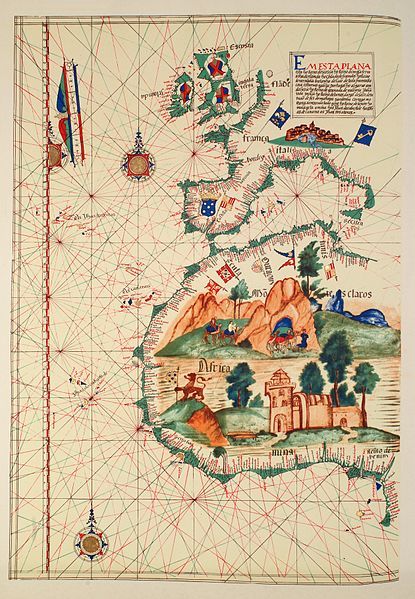Nautical chart of Portuguese cartographer Lázaro Luís, 1563 Motivated by the desire fo
Nautical chart of Portuguese cartographer Lázaro Luís, 1563Motivated by the desire for new markets and an ongoing opposition to the Muslims, Portuguese sailors had begun to explore the West African coast in the first half of the fifteenth century. The expeditions were sponsored by Prince Henry of Portugal, who founded a center for seamanship around 1420 and earned himself the title of the Navigator. At the center, information about tides and currents was collected, more accurate charts and maps were drawn, techniques for determining longitude were improved, and new ship designs (such as the caravel) were developed. With these innovations, the Portuguese reached the westernmost point of the continent at Cape Verde in 1448, setting up a lucrative network of trading posts along the way. The most significant voyages, however, came forty years later. Bartolomeu Dias rounded the Cape of Good Hope at the southern tip of Africa in 1488. A decade later, Vasco da Gama sailed around Africa and reached the Malabar Coast of India, establishing an all‐water route to Asia. Over the next twenty years, Portugal made Goa its major trading center in India, established outposts in Malaysia, and set up direct contact with China. The Muslim monopoly on the spice trade in Asia was broken.I will be posting more about Portuguese explorations in Africa during the weekend. I will include some interesting facts about it. -- source link
Tumblr Blog : historyfilia.tumblr.com
#portuguese#map#africa
